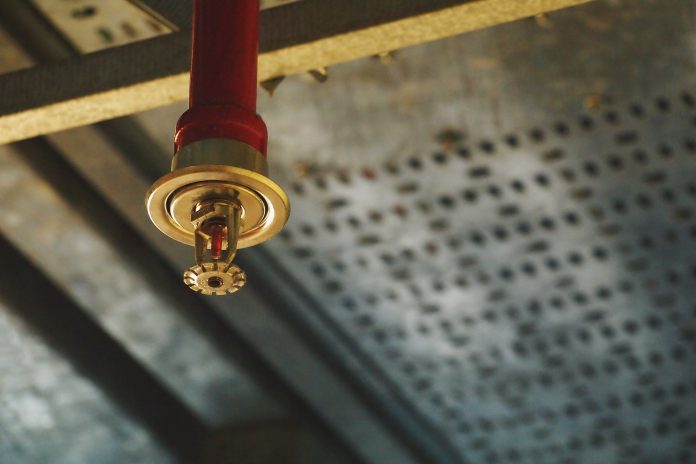Choosing the correct and safe piping material is of the utmost importance to ensure comprehensive fire safety in homes and office spaces. In this article, CuSP explore how copper piping can provide a fire-safe and sustainable alternative
In January, the English government instituted new fire safety regulations following the Grenfell disaster of 2017. Many of these regulations with a focus on cladding and building structures.
However, have they considered the potentially catastrophic network of hidden plastics found throughout the built environment, such as piping?
Despite there being safe and sustainable alternatives, plastics and synthetic materials have unfortunately become all too common in construction projects due to their relatively cheap cost and wide availability.
One option which is both fire-safe and sustainable is the natural material copper.
What are the risks posed by synthetic materials?
While many of us are aware of the dangers of synthetic materials and their fire risk, there is a much starker difference in safety between synthetics and natural furnishings, in the case of a fire, than most of us realise.
A recent study has unearthed the truth about the dangers of synthetics by performing an experiment which involved setting a room filled with synthetic furnishings on fire and then comparing the results with a similar room, except all the materials were of natural origin.
The research found that in just five minutes, the synthetic room was engulfed in flames. Meanwhile, after 29 minutes, the natural room still wasn’t fully engulfed, proving the dangers of synthetic materials during fires.
Dangers of having unsuitable piping and materials
The rapid spread of flammable materials is only one of the dangers presented by building fires.
The fumes released from the burning plastic and synthetic materials can be toxic and extremely harmful to human health.
A notable example is one of the many horrifying repercussions of the Grenfell Fire disaster: at least a dozen firefighters involved in tackling the blaze have now been diagnosed with terminal cancer.
Most of the conditions are believed to be incurable digestive cancers and leukaemia, which are linked to high levels of exposure to carcinogens.
The safety offered by copper
To prevent harm to people and damage to the built environment, it’s necessary to choose the most fire-safe material possible, especially in fire sprinkler systems, which are installed in complex networks throughout apartment buildings and offices.
Laws dictate that every area of high-rise buildings over the height of 11 metres to ensure fires can be extinguished.
With an extremely high melting point of 1,085 degrees Celsius, copper piping will remain safe in structural fires, which average temperatures of up to 816 degrees, whereas PVC, one of the most commonly used plastics in construction, has a combustion point of 421 degrees Celsius, rendering it much less safe than copper.
In addition to being fire-safe, copper piping is durable and flexible, meaning it can be manipulated to fit the required complex network without losing any of its strength or qualities. To ensure strength, copper pipes are joined together with extremely strong bonds through brazing or soldering, making them unlikely to break.
As well as being used in sprinkler systems, copper is used in a plethora of different ways to fight fires. For example, in powder form, copper can be used in fire extinguishers against fires involving flammable metals.
Copper piping is effective in its role thanks to its conducting properties meaning once released from the extinguisher, the powder absorbs the heat from the fire and materials, slowing down the combustion process.
Other qualities that make copper powder a superb extinguisher are that, as a powder form it can eradicate the oxygen from the reaction, putting out the fire; its chemical makeup can interfere with the reactions of the fire, speeding up the extinguishing process; and finally, the residue left after the fact can prevent the fire from restarting.
Sustainably safe for the planet and body
What’s more, copper piping also ensures water safety with its anti-microbial properties, which prevent the growth of mould, fungi or other matter that could block the pipes, make the water unsafe or reduce their efficacy.
This is especially crucial when it concerns fire sprinkler systems, which must function effectively in emergent situations so any blockages causing even a few seconds of delay could mean the difference between life or death.
Unlike plastic and synthetic materials, copper is infinitely recyclable, which means that it can be used countless times without losing any of its qualities, making it able to save endless lives.
It’s time for society to move away from plastics and synthetics and towards safe and sustainable materials like copper.

















